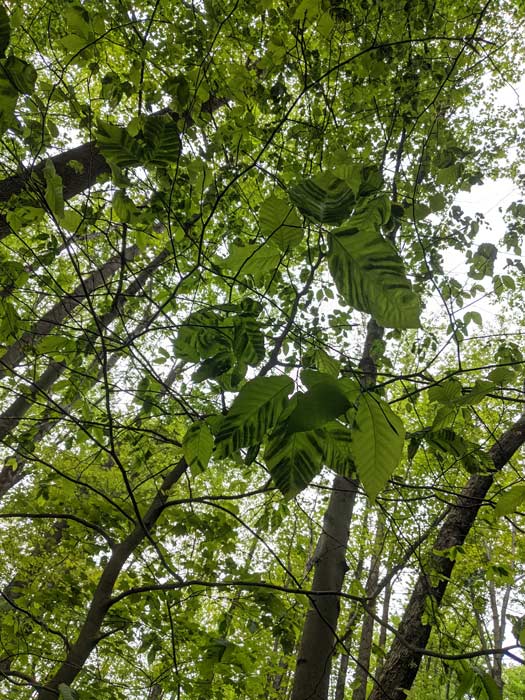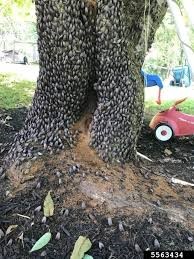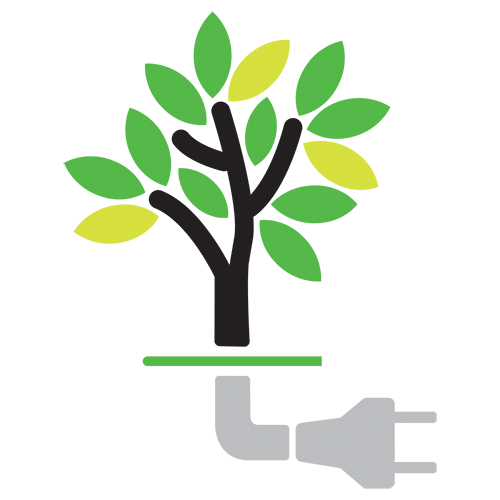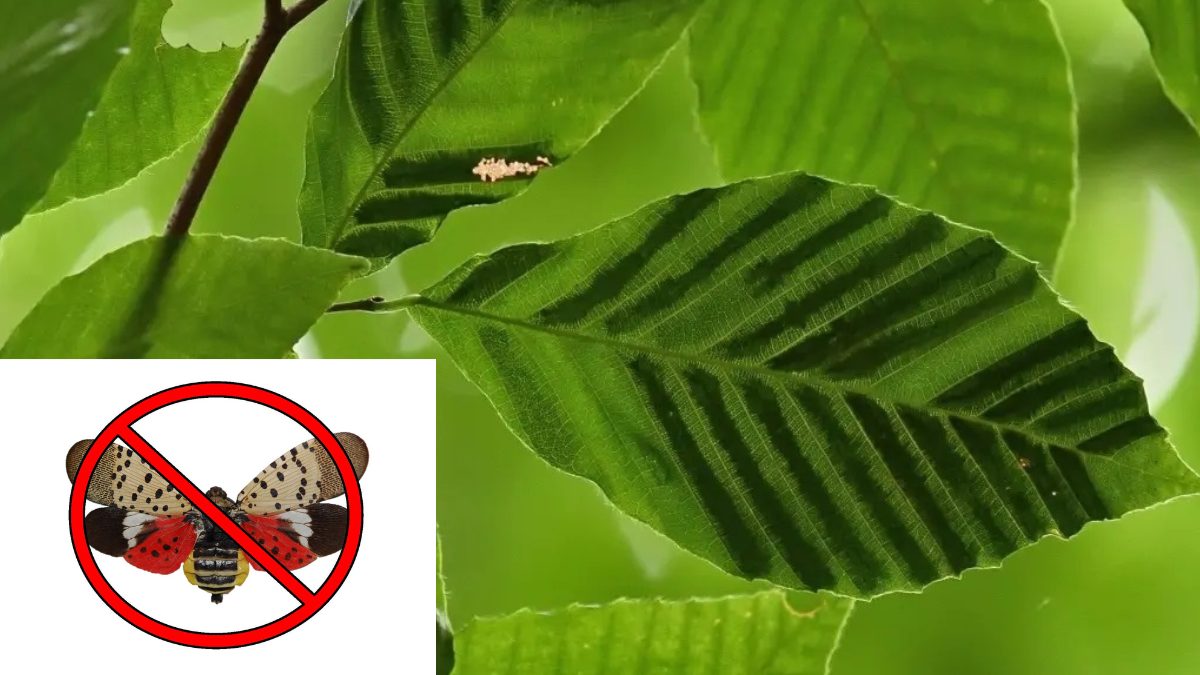As we’re moving into late summer there are two things you need to be on the lookout for in your landscape: Beech Leaf Disease and the Spotted Lanternfly.
Beech Leaf Disease
Most likely you have never even heard of one of them: Beech Leaf Disease. This is a relatively new threat to the New Jersey forests and landscape. It impacts both native and ornamental beech trees. Since beech trees are one of the eastern North America’s most important trees, this is a concern to all of us. If you haven’t walked through the woods when the beech trees are first leafing out, you’ve truly missed a most beautiful and magical moment. One of many worthwhile reasons to do our part and protect our forests.

The first visible signs of Beech Leaf Disease (BLD) are dark green striped bands between the leaf veins that may only be present on a few leaves. These are easily seen by holding up the leaves to the light or looking up into the canopy of the trees. As the disease progresses, more leaves become affected and additional symptoms appear, including browning leaf edges that begin to curl and crinkle, defoliation and leathery leaf texture. The disease causes severe decline to a tree’s health before the tree eventually dies, generally, a mature tree, within 6-10 years. The disease is caused by nematodes (tiny roundworms) that feed on beech buds and leaves.
There is significant concern that this disease will dramatically reduce the number of beech trees and their ecological services in Northeastern forests. We can all do our part! If you have beech trees on your property, please keep monitoring them for early signs of Beech Leaf Disease. Do the same when you’re out for a walk or hike. The Department of Environmental Protection (DEP) is urging residents to check beech trees on their property for signs of the disease. Should your trees show signs of Beech Leaf Disease, please report your findings to the New Jersey Forest Service at [email protected] or call 609-292-2532.
Spotted Lanternfly
The second issue to be on the lookout for is the Spotted Lanternfly. By now, everyone has either seen. or at least heard of, the Spotted Lanternfly. In a very short amount of time, this colorful insect has established a strong foothold in all 21 counties of New Jersey. Because of the way it spreads and feeds on so many different plants, experts don’t think the invasion is going to let up any time soon.

Spotted Lanternflies are easy to spot in August because they are in the adult phase of their lifecycle. These adults will start laying their egg masses in September which makes August an important time of the year to take action. You want to treat before the females have a chance to lay their egg masses.
T&T Tree Service has a variety of programs and applications designed to provide protection and control of both the Beech Leaf Disease and the Spotted Lanternfly. During your free consultation with our Certified Arborists and Licensed Tree Experts, you will receive a comprehensive analysis, tailored to your needs with appropriate recommendations for treatment against insects and diseases to improve the overall health of your trees and shrubs.
With over 30 years of experience in tree service and landscape maintenance, T&T Tree Service is able to offer you expert advice as to what plants you should plant where. Avoid costly mistakes and increase the value of your property!
For more information, please visit: https://ttservices.com or call 609-397-2700 for your free consultation.
Interested in sponsored content? Contact MercerMe Advertising!







